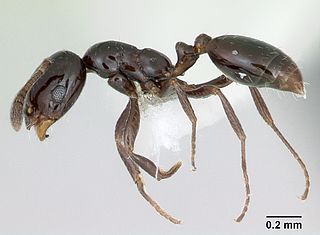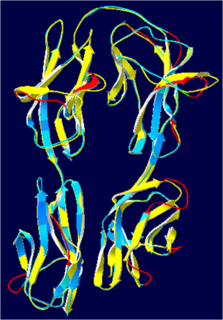
An ectotherm, is an organism in which internal physiological sources of heat are of relatively small or quite negligible importance in controlling body temperature. Such organisms rely on environmental heat sources, which permit them to operate at very economical metabolic rates. Some of these animals live in environments where temperatures are practically constant, as is typical of regions of the abyssal ocean and hence can be regarded as homeothermic ectotherms. In contrast, in places where temperature varies so widely as to limit the physiological activities of other kinds of ectotherms, many species habitually seek out external sources of heat or shelter from heat; for example, many reptiles regulate their body temperature by basking in the sun, or seeking shade when necessary in addition to a whole host of other behavioral thermoregulation mechanisms. For home captivity as pet, reptile owners can use a UVB/UVA light system to assist the animals' basking behaviour.

The Arctiinae are a large and diverse subfamily of moths, with around 11,000 species found all over the world, including 6,000 neotropical species. This group includes the groups commonly known as tiger moths, which usually have bright colours, footmen, which are usually much drabber, lichen moths, and wasp moths. Many species have "hairy" caterpillars that are popularly known as woolly bears or woolly worms. The scientific name of this subfamily refers to this hairiness. Some species within the Arctiinae have the word “tussock” in their common name due to people misidentifying them as members of the Lymantriinae based on the characteristics of the larvae.

The brown-tail moth is a moth of the family Erebidae. It is native to Europe, neighboring countries in Asia, and the north coast of Africa. Descriptions of outbreaks, i.e., large population increases of several years duration, have been reported as far back as the 1500s. The life cycle of the moth is atypical, in that it spends approximately nine months as larvae (caterpillars), leaving about one month each for pupae, imagos and eggs. Larvae (caterpillars) are covered in hairs. Two red spots on the back, toward the tail, distinguish these species from other similarly hairy moth larvae. The winged adults have white wings and a hairy white body with a tuft of brown hair at the tip of the abdomen. Females lay one egg cluster, usually on the underside of a leaf of a host plant. The species is polyphagous, meaning that it feeds on many different species of trees, including pear, apple, maple and oak.

The fall webworm is a moth in the family Erebidae known principally for its larval stage, which creates the characteristic webbed nests on the tree limbs of a wide variety of hardwoods in the late summer and fall. It is mainly an aesthetic pest and is not believed to harm otherwise healthy trees. It is well known to commercial tree services and arboriculturists.

The Spilosomina are a subtribe of tiger moths in the Arctiini tribe, which is part of the family Erebidae.
The nuclear polyhedrosis virus (NPV), part of the family of baculoviruses, is a virus affecting insects, predominantly moths and butterflies. It has been used as a pesticide.
Hyphantria is a genus of tiger moths in the family Erebidae. The moths are primarily found in North and Central America. One species, Hyphantria cunea, was introduced in Western, Central and Eastern Eurasia.

The little black ant is a species of ant native to North America. It is a shiny black color, the workers about 1 to 2 mm long and the queens 4 to 5 mm long. It is a monomorphic species, with only one caste of worker, and polygyne, meaning a nest may have more than one queen. A colony is usually moderately sized with only a few thousand workers.
Chouioia is a genus of hymenopteran insects of the family Eulophidae.
Chersomorpha is a genus of moths belonging to the subfamily Tortricinae of the family Tortricidae.

John Douglas Tothill DSc, CMG, was an English-born entomologist, agriculturalist and civil servant, whose career took him to Canada, Fiji, Uganda and the Sudan. He was the son of Walter Tothill and Frances L. Williams.

Hemolin is an immunoglobulin-like protein exclusively found in Lepidoptera. It was first discovered in immune-challenged pupae of Hyalophora cecropia and Manduca sexta.
Chersomorpha hyphantria is a species of moth of the family Tortricidae. It is found in Papua New Guinea and on Sumba, an island in eastern Indonesia.
Hyphantria orizaba is a moth of the family Erebidae. It was described by Druce in 1897. It is found in Mexico.
Hyphantria panoezys is a moth of the family Erebidae. It was described by Harrison Gray Dyar Jr. in 1916. It is found in Mexico.
Hyphantria pictipupa is a moth of the family Erebidae. It was described by Fitch in 1857. It is found in Brazil.
Copromorpha is a genus of moth in the family Copromorphidae.
Alphabaculovirus is a genus of viruses in the family Baculoviridae. Its natural hosts include a wide range of invertebrates, among them winged insects, Lepidopterans, Hymenopterans, Dipterans, and decapods. There are currently 32 species in the genus, including the type species Autographa californica multiple nucleopolyhedrovirus.










